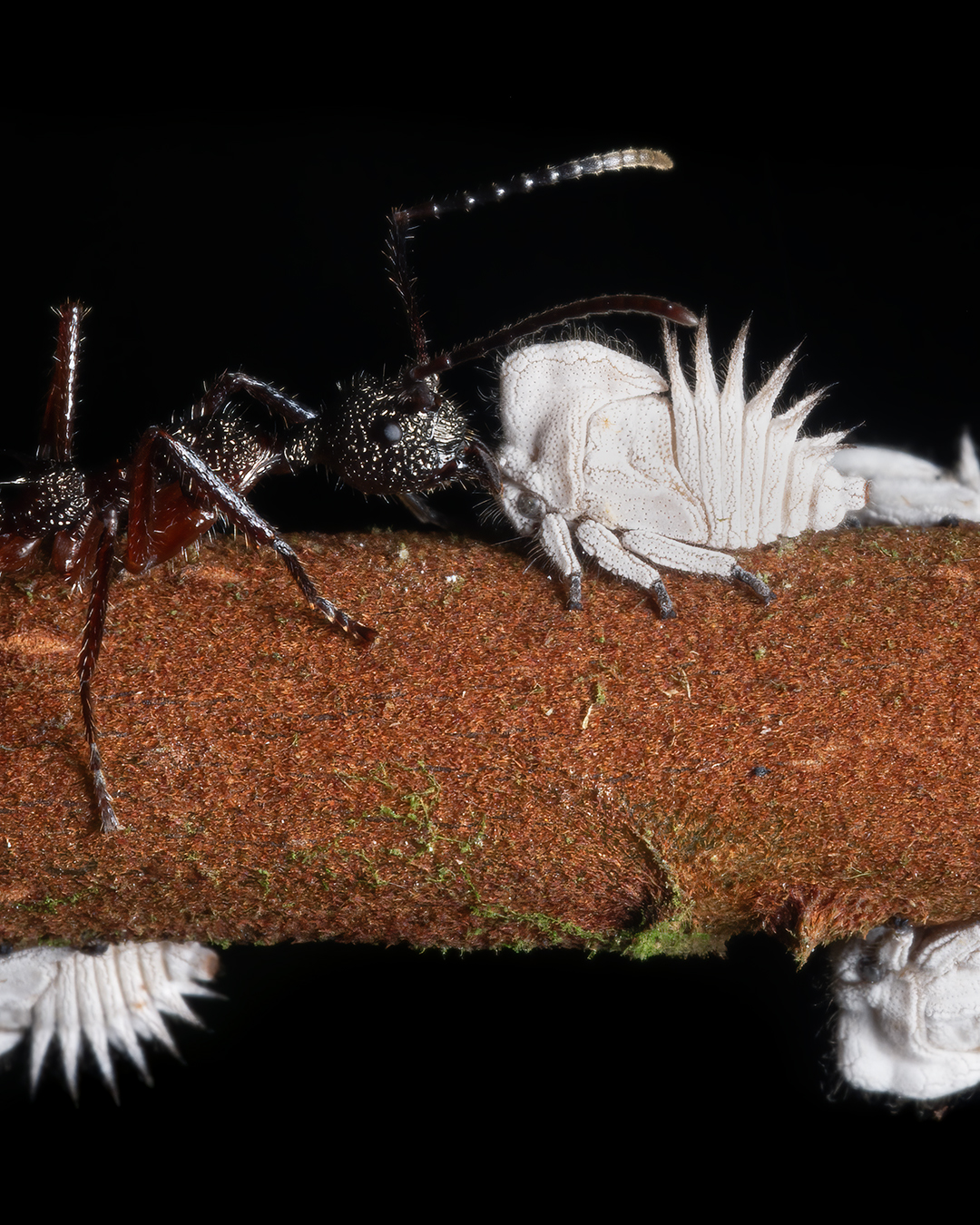Have you ever been walking in the jungle one day and had a sudden epiphany that ants are just miniature humans?
Hear me out…
Ants have spread across the globe and colonised every continent except Antarctica
The secret to their success is their ability to collaborate in large numbers.
They manipulate the natural landscape for their own benefit and create gigantic metropolises that house millions of individuals.
Their populations have grown to such absurd proportions that their biomass is now more than all the wild birds and mammals combined.
They constantly fight wars with each other over land and resources.
And many of them spend almost their entire lives repeating the same monotonous tasks over and over again.
Tell me I didn’t just describe people.
Okay, admittedly, ants haven’t quite mastered the stuff that makes humans special, like art and science and beer, but they’ve also managed to avoid getting distracted by religion or populism or social media – so the jury’s still out on who the cleverer creature is.
However, there’s one particular facet of human behaviour that ants have been practicing much, much longer than we have – farming!
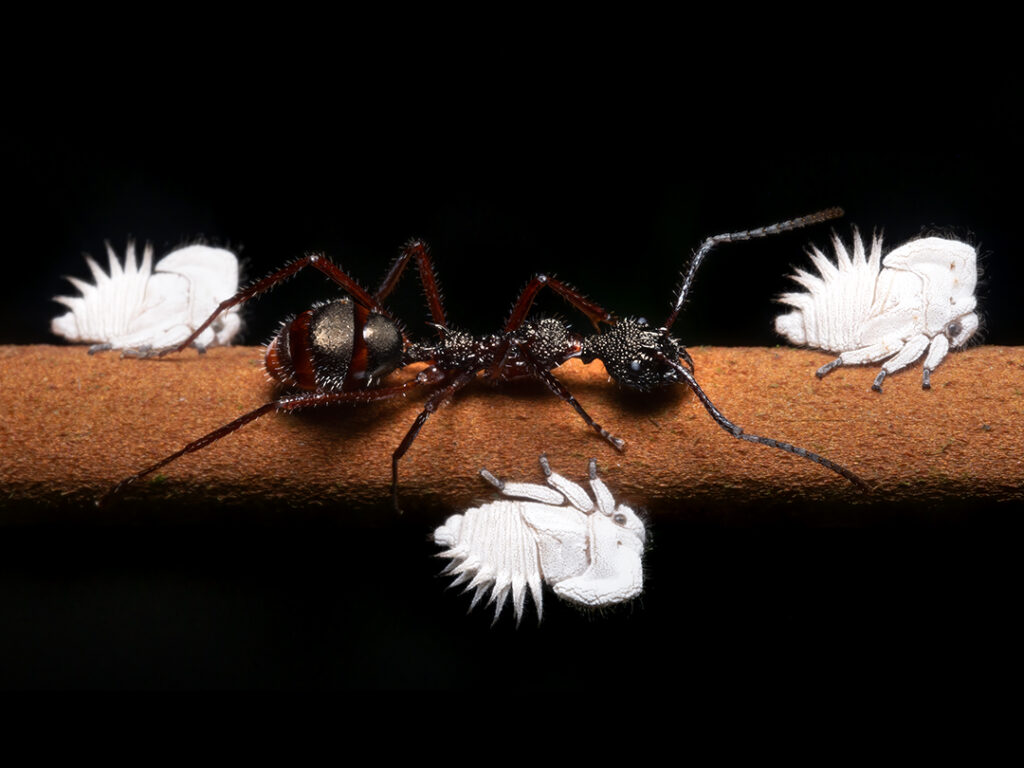
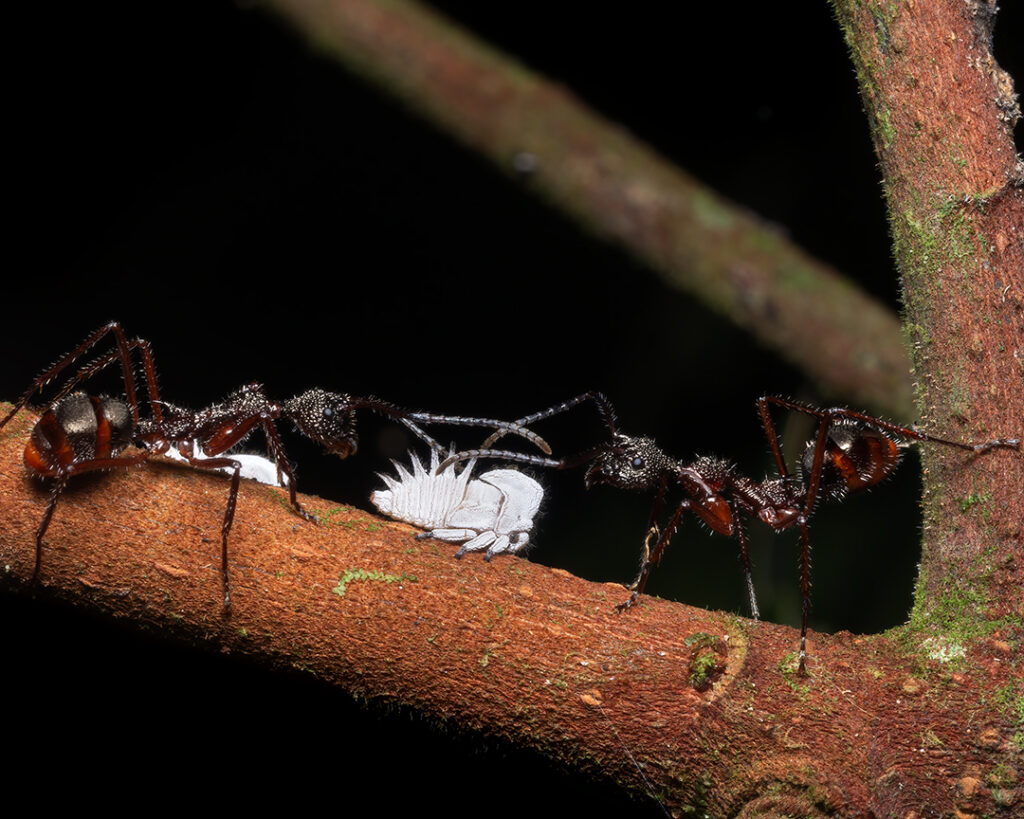
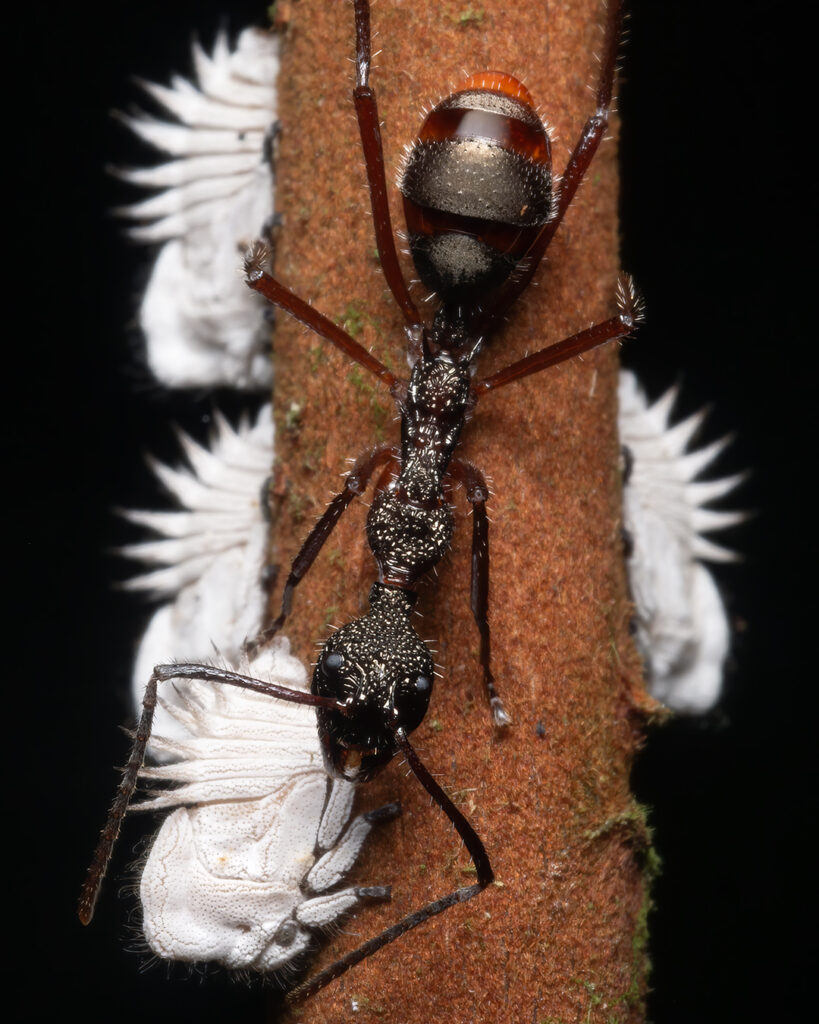
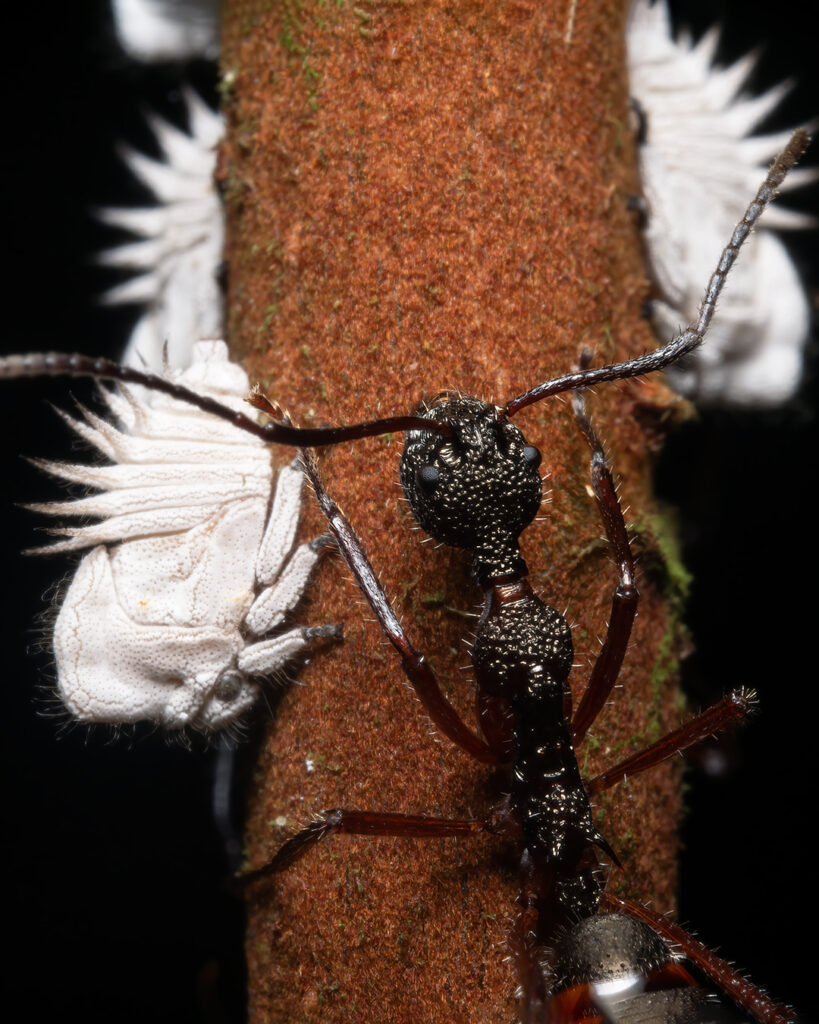
From leafcutter ants cultivating fungi, to weaver ants harvesting silk, ants have mastered a multitude of agricultural techniques, and the Dolichoderus ants, pictured here with their treehopper nymph livestock, are no exception.
Shepherds herd sheep together and watch over them, providing protection from predators such as wolves, and in return the sheep provide milk for the humans. That sentence, when translated into the miniature world, reads a little something like this: Worker ants herd the treehopper nymphs together and watch over them, providing protection from predators such as spiders, and in return the treehopper nymphs provide honeydew for the ants.
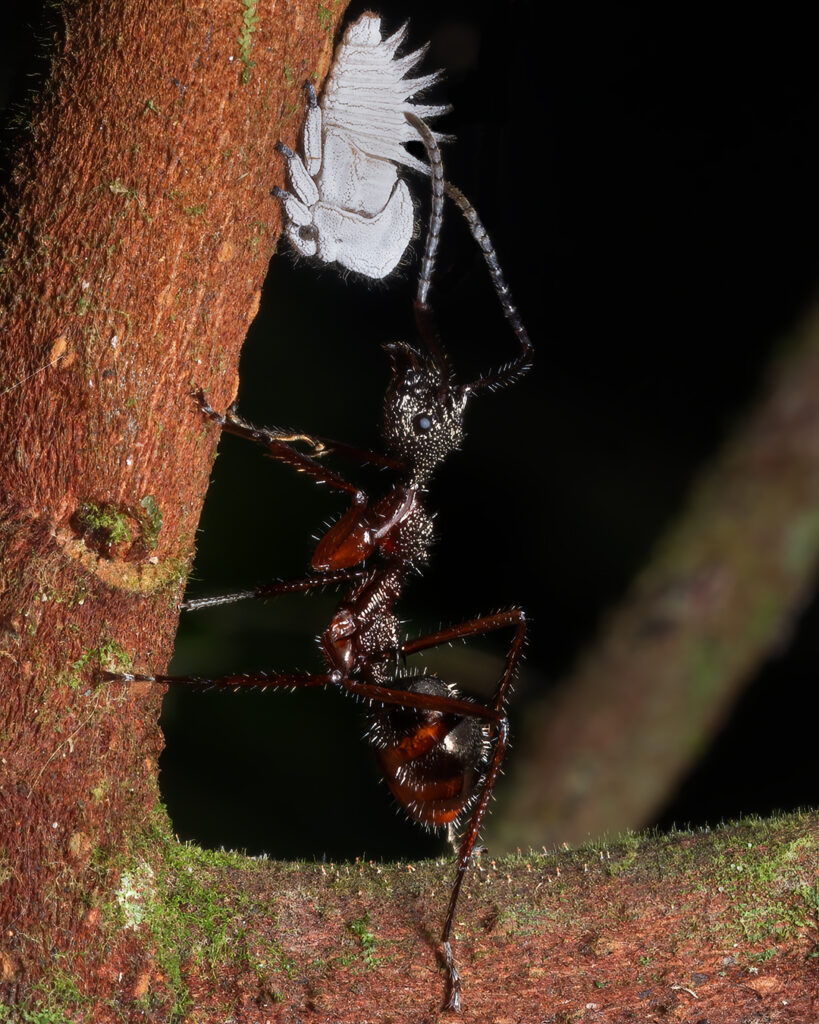
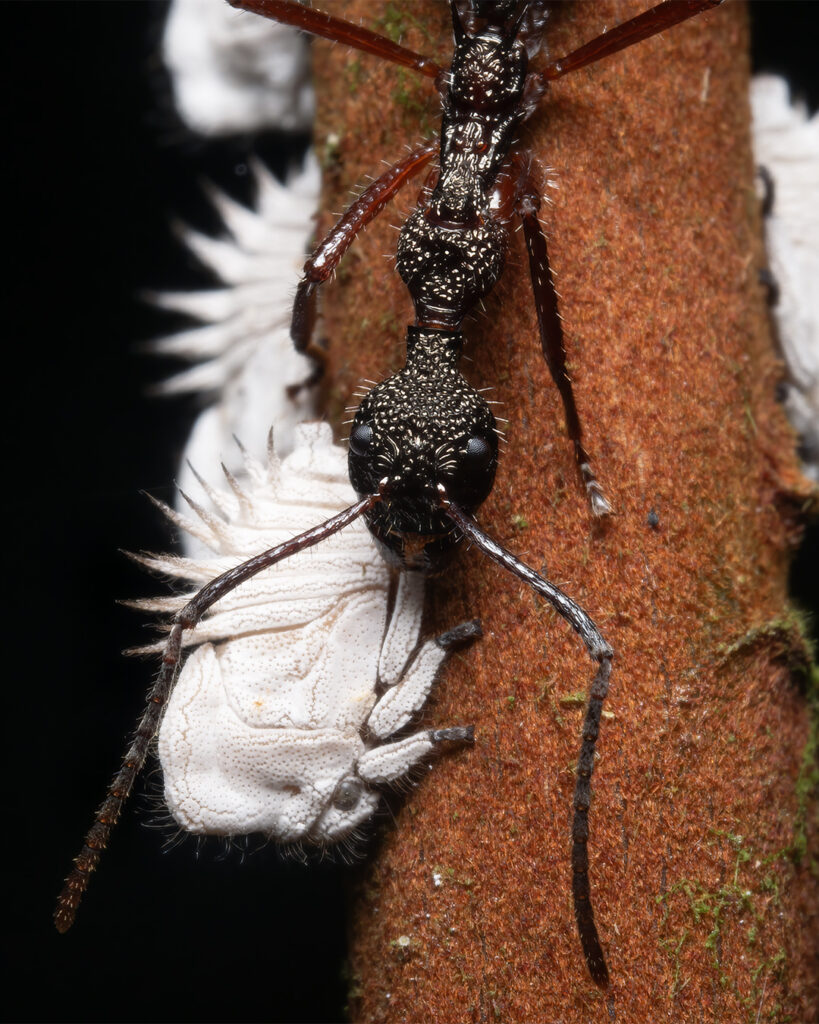
In evolutionary terms, this is known as a mutualistic relationship – one in which the reproductive fitness of both species is improved thanks to a certain interaction. And it’s important to remember that all successful agriculture is mutualistic by definition. If it wasn’t, then one species would eventually die out.
Just to really drive home that last point, consider the case of wheat. By evolutionary standards, wheat is undoubtedly the most successful plant species on the planet – thanks almost entirely to its mutualism with humans. Wheat has been taken to almost every corner of the globe, and entire landscapes have been altered in order to allow it to grow more easily.
We like to think of the plants and animals we farm as ‘domesticated’, but when we consider the lengths we go to and the energy we expend in raising these organisms, it’s not always clear who has domesticated whom…
–
Ants (Dolichoderus sp.) farming Treehopper Nymphs (Membracidae), Manu Biological Station, Peru 🇵🇪
PS. I pretty much stole that entire wheat narrative from Sapiens by Yuval Noah Harari – go out and read it if you haven’t already.


